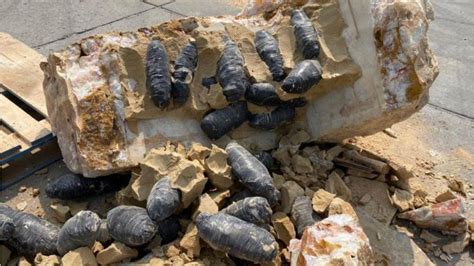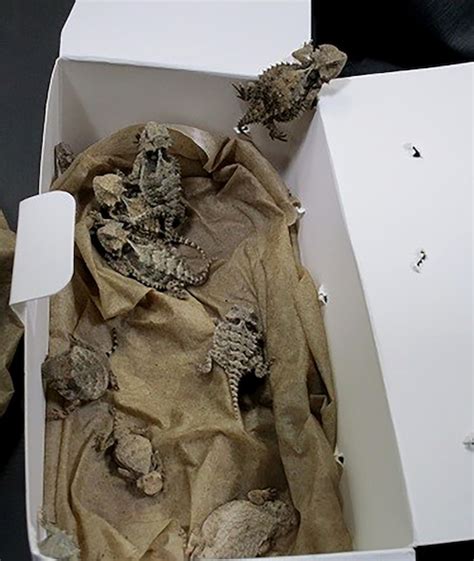
A man attempting to cross the U.S.-Mexico border was apprehended after U.S. Customs and Border Protection (CBP) officers discovered live birds concealed in his pants. The incident occurred at the San Ysidro Port of Entry in California, raising concerns about wildlife smuggling and potential biosecurity risks.
U.S. Customs and Border Protection (CBP) officers at the San Ysidro Port of Entry made a startling discovery when they found live birds hidden inside a man’s pants as he attempted to cross the border from Mexico into the United States. The incident, which occurred recently, has prompted a thorough investigation into wildlife smuggling and biosecurity protocols.
According to CBP officials, the man was subjected to additional inspection based on initial screening protocols. During the secondary inspection, officers noticed “unusual bulges” in the man’s trousers, prompting a closer examination. Upon further investigation, agents discovered several live birds carefully concealed within the suspect’s clothing.
“CBP officers are vigilant and dedicated to enforcing all laws at our ports of entry,” said Sidney Aki, CBP Director of Field Operations in San Diego. “Smugglers will try every possible way to try and circumvent our laws, but due to the training, experience, and dedication of our officers, we were able to stop this individual from bringing these birds into the U.S.”
The man, whose identity has not been released, was taken into custody, and the live birds were seized. CBP officials coordinated with U.S. Fish and Wildlife Services to ensure the proper handling and care of the birds. The birds were placed in quarantine to undergo veterinary inspection and testing to prevent the potential spread of diseases.
Wildlife smuggling poses a significant threat to biodiversity, conservation efforts, and public health. Live animals are often subjected to inhumane conditions during transport, and smuggled animals can introduce invasive species and diseases that harm native ecosystems and agricultural industries.
CBP officers are trained to detect and intercept illegal wildlife trafficking at ports of entry. They work closely with other federal agencies, such as the U.S. Fish and Wildlife Service and the Department of Agriculture, to enforce wildlife protection laws and regulations.
The San Ysidro Port of Entry is one of the busiest land border crossings in the world, processing thousands of vehicles and pedestrians daily. CBP officers at the port are responsible for enforcing a wide range of laws and regulations, including immigration, customs, and agriculture laws. The discovery of live birds hidden in a person’s pants highlights the challenges faced by CBP officers in detecting and preventing illegal activity at the border.
This incident serves as a reminder of the importance of border security and the ongoing efforts to combat wildlife smuggling. CBP remains committed to protecting the nation’s borders and enforcing laws that protect wildlife and prevent the spread of diseases.
Expanded Context and Analysis
The attempted smuggling of live birds across the U.S.-Mexico border underscores several critical issues, including the motivations behind wildlife smuggling, the potential ecological and economic consequences, and the measures in place to combat such activities. This incident is not isolated; wildlife smuggling is a global problem driven by various factors, including the demand for exotic pets, traditional medicine, and other uses.
Motivations Behind Wildlife Smuggling
The motivations for smuggling wildlife are complex and varied. In many cases, it is driven by profit. Rare or exotic animals can fetch high prices on the black market, making them attractive targets for smugglers. The demand for exotic pets, particularly in developed countries, fuels much of the illegal wildlife trade.
Another motivation is the use of animal parts in traditional medicine. In some cultures, certain animal products are believed to have medicinal properties. This demand can lead to the illegal hunting and trafficking of endangered species.
Furthermore, some people smuggle animals for personal collections or as a status symbol. Owning a rare or exotic animal can be seen as a sign of wealth and power, further driving the demand for illegal wildlife.
Ecological and Economic Consequences
Wildlife smuggling has far-reaching ecological and economic consequences. The removal of animals from their natural habitats can disrupt ecosystems and lead to population declines. Invasive species introduced through smuggling can outcompete native species, causing further ecological damage.
The economic consequences of wildlife smuggling can also be significant. The introduction of diseases carried by smuggled animals can devastate agricultural industries and public health systems. For example, the introduction of avian influenza (bird flu) can lead to the culling of poultry flocks, resulting in billions of dollars in losses for farmers and consumers.
Wildlife smuggling also undermines conservation efforts. The illegal trade in endangered species can drive them closer to extinction, making it more difficult and costly to protect them.
Measures to Combat Wildlife Smuggling
Combating wildlife smuggling requires a multifaceted approach involving international cooperation, law enforcement, and public awareness campaigns. International treaties, such as the Convention on International Trade in Endangered Species (CITES), regulate the trade in endangered species and provide a framework for international cooperation.
Law enforcement agencies, such as CBP and the U.S. Fish and Wildlife Service, play a crucial role in detecting and intercepting illegal wildlife shipments. These agencies use various methods, including inspections, surveillance, and intelligence gathering, to identify and apprehend smugglers.
Public awareness campaigns are also essential for reducing the demand for illegal wildlife products. By educating the public about the ecological and economic consequences of wildlife smuggling, it is possible to reduce the demand for these products and help protect endangered species.
The Role of Technology
Technology plays an increasingly important role in combating wildlife smuggling. Advanced imaging technologies, such as X-ray scanners and thermal cameras, can be used to detect hidden animals and animal products. DNA analysis can be used to identify the species and origin of smuggled animals, helping to track and prosecute smugglers.
Social media and online marketplaces have also become important tools for wildlife smugglers. Law enforcement agencies are working to monitor these platforms and identify individuals involved in the illegal wildlife trade.
Challenges and Future Directions
Despite the efforts to combat wildlife smuggling, significant challenges remain. The illegal wildlife trade is a highly lucrative business, and smugglers are constantly developing new methods to evade detection. Law enforcement agencies must stay one step ahead of smugglers by using the latest technologies and intelligence-gathering techniques.
International cooperation is also essential for combating wildlife smuggling. Smugglers often operate across borders, making it necessary for countries to work together to share information and coordinate law enforcement efforts.
In the future, it will be important to focus on reducing the demand for illegal wildlife products. This can be achieved through public awareness campaigns, education programs, and stricter enforcement of wildlife protection laws. It will also be important to address the underlying economic and social factors that drive wildlife smuggling, such as poverty and lack of economic opportunities.
The San Ysidro Port of Entry: A Critical Border Crossing
The San Ysidro Port of Entry is one of the busiest land border crossings in the world, handling a significant volume of vehicular and pedestrian traffic daily. Its strategic location makes it a crucial point for trade, tourism, and daily commuting between the United States and Mexico. However, this high volume also presents unique challenges for law enforcement agencies like CBP, who are tasked with preventing illegal activities, including drug trafficking, human smuggling, and, as this incident demonstrates, wildlife smuggling.
The port’s infrastructure includes multiple vehicle lanes, pedestrian walkways, and advanced inspection technologies designed to detect contraband and other violations. CBP officers stationed at San Ysidro undergo rigorous training to identify suspicious behavior and utilize various screening methods to ensure the safety and security of the border.
The Broader Context of Biosecurity
The incident involving the smuggled birds also highlights the importance of biosecurity measures at border crossings. Biosecurity refers to the practices and policies designed to prevent the introduction and spread of harmful organisms, such as diseases and invasive species. These measures are crucial for protecting agriculture, the environment, and public health.
The potential introduction of avian diseases through smuggled birds poses a significant threat to the poultry industry and wild bird populations. Diseases like avian influenza can spread rapidly and have devastating consequences. Therefore, strict quarantine and testing procedures are necessary to prevent the introduction of these diseases.
Invasive species can also have significant ecological and economic impacts. These species can outcompete native species, disrupt ecosystems, and cause damage to agriculture and infrastructure. Preventing the introduction of invasive species is a key component of biosecurity efforts.
The Role of the U.S. Fish and Wildlife Service
The U.S. Fish and Wildlife Service (USFWS) plays a critical role in protecting wildlife and enforcing wildlife protection laws. The agency works closely with CBP and other law enforcement agencies to combat wildlife smuggling and protect endangered species.
The USFWS is responsible for implementing and enforcing the Endangered Species Act (ESA), which protects threatened and endangered species and their habitats. The agency also administers the Lacey Act, which prohibits the trade in illegally taken wildlife.
In the case of the smuggled birds, the USFWS was responsible for ensuring the proper handling and care of the birds and for conducting veterinary inspections and testing to prevent the spread of diseases. The agency also plays a role in investigating and prosecuting wildlife smuggling cases.
Legal Ramifications and Penalties
Smuggling live animals across the border carries significant legal ramifications. Depending on the species involved and the circumstances of the case, individuals can face criminal charges under various federal laws, including the Lacey Act, the Endangered Species Act, and customs regulations.
Penalties for wildlife smuggling can include fines, imprisonment, and the forfeiture of assets. In some cases, smugglers may also be subject to civil penalties. The severity of the penalties depends on the nature of the offense and the individual’s criminal history.
The Impact on Conservation Efforts
Wildlife smuggling has a detrimental impact on conservation efforts worldwide. The illegal trade in endangered species can drive them closer to extinction, making it more difficult and costly to protect them. Wildlife smuggling also undermines efforts to protect habitats and ecosystems.
Conservation organizations and government agencies are working to combat wildlife smuggling through various measures, including law enforcement, habitat protection, and public awareness campaigns. These efforts are essential for protecting biodiversity and ensuring the survival of endangered species.
The Psychological Dimension of Smuggling
Beyond the legal and environmental implications, the act of smuggling live animals raises ethical questions about the treatment of these creatures. Confining birds in such a manner, restricting their movement and subjecting them to stress, constitutes animal cruelty. This highlights a disconnect between the smuggler’s motivations (typically financial gain) and the welfare of the animals involved.
Understanding the psychological profile of smugglers can be helpful in developing more effective detection and prevention strategies. Factors such as risk tolerance, financial desperation, and moral indifference may play a role in their decision to engage in such activities.
The Future of Border Security and Wildlife Protection
The incident at the San Ysidro Port of Entry underscores the evolving challenges of border security and wildlife protection. As technology advances and smuggling methods become more sophisticated, law enforcement agencies must adapt and innovate to stay ahead.
In the future, we can expect to see increased use of technology in border security, including advanced imaging systems, artificial intelligence, and data analytics. These technologies can help to detect and intercept illegal wildlife shipments more efficiently.
International cooperation will also be crucial for combating wildlife smuggling. Sharing information, coordinating law enforcement efforts, and harmonizing wildlife protection laws can help to disrupt smuggling networks and protect endangered species.
Finally, addressing the underlying economic and social factors that drive wildlife smuggling will be essential for achieving long-term success. This includes reducing poverty, promoting sustainable livelihoods, and educating the public about the importance of wildlife conservation.
The incident at the San Ysidro Port of Entry serves as a reminder of the ongoing challenges of border security and the importance of protecting wildlife. By working together, law enforcement agencies, conservation organizations, and the public can help to combat wildlife smuggling and ensure the survival of endangered species.
Conclusion
The discovery of live birds hidden in a man’s pants at the San Ysidro Port of Entry is a stark reminder of the ongoing threat of wildlife smuggling. This incident highlights the vigilance of CBP officers, the importance of biosecurity measures, and the detrimental impact of illegal wildlife trade on biodiversity and public health. Combating wildlife smuggling requires a multifaceted approach involving international cooperation, law enforcement, technology, and public awareness campaigns. By working together, we can protect endangered species and preserve our planet’s natural heritage.
Frequently Asked Questions (FAQ)
-
What exactly happened at the San Ysidro Port of Entry?
- U.S. Customs and Border Protection (CBP) officers discovered live birds concealed in a man’s pants as he attempted to cross the border from Mexico into the United States. The discovery was made during a secondary inspection after officers noticed “unusual bulges” in the man’s trousers.
-
Why is smuggling live birds a problem?
- Smuggling live birds and other animals can have several negative consequences:
- Ecological Impact: Smuggled animals can introduce invasive species that disrupt native ecosystems and outcompete local wildlife.
- Disease Transmission: Animals can carry diseases that can spread to domestic livestock, wildlife, and even humans (zoonotic diseases).
- Animal Welfare: The conditions in which smuggled animals are transported are often inhumane, causing stress, injury, and even death.
- Economic Impact: Outbreaks of animal diseases can devastate agricultural industries and require costly control measures.
- Smuggling live birds and other animals can have several negative consequences:
-
What are the potential legal consequences for smuggling wildlife?
- The legal consequences for smuggling wildlife can be severe and depend on the species involved, the value of the animals, and the intent of the smuggler. Possible penalties include:
- Fines: Substantial fines can be levied for violating wildlife protection laws.
- Imprisonment: Smugglers can face jail time, particularly for repeat offenses or for smuggling endangered species.
- Forfeiture: Assets used in the smuggling operation, such as vehicles and money, can be seized by the government.
- Criminal Record: A conviction for wildlife smuggling can result in a criminal record, which can affect future employment and travel opportunities.
- Civil Penalties: In addition to criminal charges, smugglers may also be subject to civil penalties.
- The legal consequences for smuggling wildlife can be severe and depend on the species involved, the value of the animals, and the intent of the smuggler. Possible penalties include:
-
What measures are in place to prevent wildlife smuggling at border crossings?
- U.S. Customs and Border Protection (CBP) and other agencies employ several measures to prevent wildlife smuggling at border crossings:
- Inspections: CBP officers conduct inspections of vehicles, cargo, and personal belongings to detect hidden animals and wildlife products.
- Technology: Advanced imaging technologies, such as X-ray scanners, are used to detect concealed items.
- Trained Personnel: CBP officers receive training to identify suspicious behavior and recognize wildlife products.
- Cooperation with Other Agencies: CBP works closely with the U.S. Fish and Wildlife Service (USFWS) and other agencies to enforce wildlife protection laws.
- Intelligence Gathering: CBP gathers intelligence on smuggling networks to identify and disrupt illegal activities.
- Canine Units: Specially trained dogs are used to detect hidden animals and wildlife products.
- U.S. Customs and Border Protection (CBP) and other agencies employ several measures to prevent wildlife smuggling at border crossings:
-
What role does the U.S. Fish and Wildlife Service (USFWS) play in this type of incident?
- The U.S. Fish and Wildlife Service (USFWS) plays a crucial role in cases involving wildlife smuggling:
- Identification and Handling: USFWS experts identify the species of the smuggled animals and ensure they are handled properly.
- Veterinary Care: The USFWS provides veterinary care to the animals, including quarantine and testing for diseases.
- Enforcement: USFWS agents investigate wildlife smuggling cases and work with prosecutors to bring charges against offenders.
- Conservation: The USFWS implements conservation programs to protect endangered species and their habitats.
- Collaboration: The USFWS collaborates with other agencies, such as CBP, to combat wildlife smuggling and enforce wildlife protection laws. The USFWS also determines the final disposition of the animals. They may be repatriated, placed in sanctuaries, or other suitable locations.
- Expertise: USFWS provides expert guidance on the interpretation and enforcement of wildlife laws and regulations.
- Public Education: USFWS conducts outreach programs to educate the public about the importance of wildlife conservation and the impacts of wildlife smuggling.
- The U.S. Fish and Wildlife Service (USFWS) plays a crucial role in cases involving wildlife smuggling:


![Browns QB Shakeup: [QB Name] Takes Lead at Minicamp!](https://jelajahtekno.com/wp-content/uploads/2025/06/unnamed-file-609-150x150.jpg)






